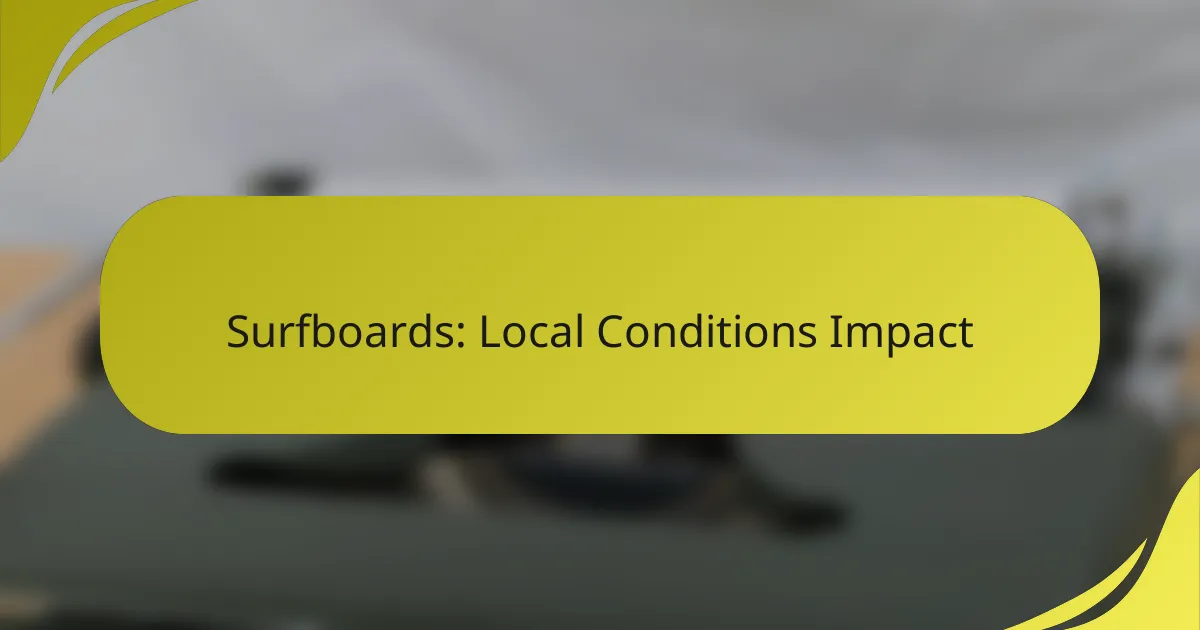Choosing the right surfboard is crucial for beginners looking to learn the sport effectively and enjoyably. Soft-top surfboards, longboards, funboards, and mini-mals are excellent options, offering stability and ease of use. By focusing on factors like size, shape, and material, new surfers can select a board that enhances their learning experience and builds confidence in the water.

What are the best surfboards for beginners?
The best surfboards for beginners are typically soft-top surfboards, longboards, funboards, and mini-mals. These options provide stability, ease of use, and a forgiving nature, making them ideal for those just starting out in surfing.
Soft-top surfboards
Soft-top surfboards are the most recommended choice for beginners due to their safety and stability. The soft foam top reduces the risk of injury during falls, which is common when learning to surf. They are generally wider and thicker, providing better buoyancy and easier paddling.
When choosing a soft-top surfboard, look for models that are around 8 to 9 feet long. This size helps with balance and catching waves more effectively. Brands like Wavestorm offer affordable options that are popular among new surfers.
Longboards
Longboards are another excellent option for beginners, typically measuring 9 to 12 feet in length. Their extended length and width provide greater stability, making it easier to stand up and ride waves. Longboards are ideal for small, gentle waves, which are perfect for learning.
While longboards can be heavier and more challenging to maneuver, they allow for a smoother ride and are great for practicing balance. Consider a longboard with a rounded nose for added stability.
Funboards
Funboards are versatile surfboards that usually range from 7 to 8 feet in length, bridging the gap between longboards and shortboards. They offer a good mix of stability and maneuverability, making them suitable for beginners who want to progress quickly.
Funboards are designed to handle a variety of wave conditions, allowing new surfers to practice different techniques. Their shape helps with paddling and catching waves, making them a solid choice for those looking to improve their skills.
Mini-mal surfboards
Mini-mal surfboards, typically around 7 to 8 feet long, are a great option for beginners who want something more manageable than a longboard. They offer a balance of stability and performance, allowing surfers to transition to more advanced techniques as they gain confidence.
These boards are often narrower than longboards but still provide enough volume for easy paddling. Mini-mals are suitable for a range of wave conditions, making them a practical choice for new surfers.
Brand recommendations: Wavestorm, BIC Sport
Wavestorm is a highly recommended brand for beginners due to its affordable and durable soft-top surfboards. Their boards are widely available and come in various sizes, making them accessible for new surfers.
BIC Sport also offers a range of beginner-friendly surfboards, including funboards and mini-mals. Their boards are known for their sturdy construction and performance, making them a reliable choice for those starting their surfing journey.

How to choose a beginner surfboard?
Choosing a beginner surfboard involves considering factors like size, shape, and material to ensure stability and ease of use. A well-selected board will enhance your learning experience and help you progress more quickly.
Consider board length
Board length is crucial for beginners as it impacts stability and paddling ease. Generally, a longer board, around 8 to 9 feet, provides better balance, making it easier to catch waves.
Shorter boards, under 7 feet, can be more challenging for novices, as they require advanced skills for balance and control. Opt for a longer board to maximize your chances of success while learning.
Evaluate board width
Width affects stability; wider boards offer more surface area, which helps beginners maintain balance. A board width of 22 to 24 inches is typically ideal for new surfers.
Narrower boards may be faster but can be harder to control. Prioritize a wider board to enhance your comfort and confidence in the water.
Assess board volume
Board volume, measured in liters, determines buoyancy and stability. Beginners should look for boards with higher volume, typically between 60 to 100 liters, to help with paddling and wave catching.
A higher volume board will float better, making it easier to ride waves. Ensure the volume matches your weight and skill level for optimal performance.
Understand materials: foam vs. fiberglass
Foam boards are ideal for beginners due to their lightweight and soft construction, reducing the risk of injury. They are typically more affordable and easier to handle in the water.
Fiberglass boards offer better performance and durability but can be heavier and more expensive. For beginners, starting with a foam board is often the best choice until you gain more experience.

What features should beginners look for in surfboards?
Beginners should prioritize stability, buoyancy, and ease of paddling when selecting a surfboard. These features help new surfers gain confidence and improve their skills on the water.
Stability and buoyancy
Stability and buoyancy are crucial for beginners as they provide a solid platform for learning. A wider board typically offers more stability, making it easier to balance while paddling and riding waves.
Look for boards with a volume of around 60 to 100 liters, which generally provides good buoyancy for novice surfers. A soft-top surfboard can also enhance stability and safety, reducing the risk of injury during falls.
Weight capacity
Understanding the weight capacity of a surfboard is essential for beginners to ensure optimal performance. Most beginner boards can support a weight range of 70 to 120 kg, depending on the board’s size and design.
Choosing a board that accommodates your weight will help maintain buoyancy and stability in the water. Always check the manufacturer’s specifications to find a suitable model that meets your needs.
Ease of paddling
Ease of paddling is vital for beginners, as it affects how quickly you can catch waves. Boards with a flatter rocker and a wider nose generally allow for easier paddling and quicker wave entry.
Consider a board length of around 8 to 9 feet, which tends to facilitate paddling efficiency. Additionally, a lightweight construction can enhance maneuverability and reduce fatigue during sessions.

Where to buy beginner surfboards in the US?
Beginner surfboards can be purchased from various sources in the US, including local surf shops, online retailers, and second-hand options. Each option has its advantages, such as personalized service, convenience, and cost savings.
Local surf shops
Local surf shops are great places to buy beginner surfboards as they often provide expert advice and a chance to physically inspect the boards. Staff can help you choose the right size and type based on your skill level and local surf conditions.
Additionally, many surf shops offer lessons and rentals, which can be beneficial for beginners looking to gain experience before making a purchase. Prices typically range from a few hundred to over a thousand dollars, depending on the brand and materials.
Online retailers: Amazon, Surfboard Warehouse
Online retailers like Amazon and Surfboard Warehouse offer a wide selection of beginner surfboards at competitive prices. Shopping online allows you to compare different models and read customer reviews, which can inform your decision.
When buying online, consider shipping costs and return policies, as these can vary significantly. Many boards are priced between $200 and $600, making it easier to find something that fits your budget.
Second-hand options
Second-hand surfboards can be an economical choice for beginners. Websites like Craigslist, Facebook Marketplace, and specialized surf forums often have listings for used boards at lower prices.
When purchasing a second-hand board, inspect it for any damage, such as dings or delamination, which could affect performance. Prices for used boards can range from $50 to $300, offering significant savings compared to new models.

What are the costs of beginner surfboards?
The costs of beginner surfboards can vary significantly based on the type and brand. Generally, you can expect to spend anywhere from a few hundred to over a thousand dollars, depending on the quality and features of the board.
Price range for soft-top boards
Soft-top surfboards are ideal for beginners due to their stability and safety features. The price range for these boards typically falls between $200 and $500. They are often made from foam, making them lighter and easier to handle for new surfers.
When selecting a soft-top board, consider the length and width, as these factors influence stability and ease of paddling. Boards around 8 to 9 feet are popular choices for beginners, providing a good balance of maneuverability and stability.
Cost of longboards
Longboards, which are generally 9 feet or longer, can be a great option for beginners looking for smooth rides and easy paddling. The cost of longboards typically ranges from $400 to $1,200. Higher-end models may offer better materials and construction, enhancing performance and durability.
When purchasing a longboard, assess the construction materials and design. Epoxy boards tend to be lighter and more durable than traditional fiberglass, which can be beneficial for beginners who may drop their boards frequently.



